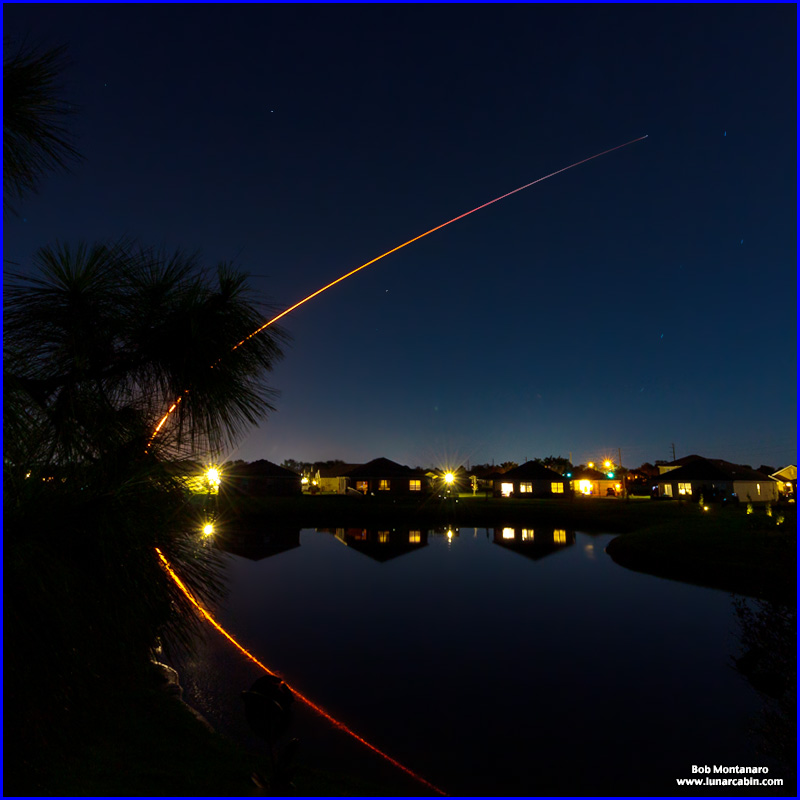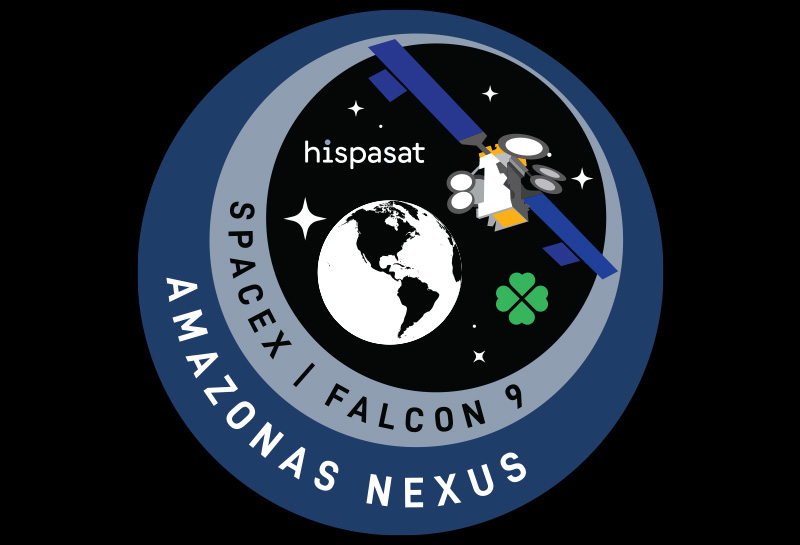 |
|
Amazonas Nexus (Falcon 9) 6 February 2023 |
Space Launch Complex 40 Cape Canaveral Space Force Station |
A SpaceX Falcon 9 rocket launched the Hispasat Amazonas Nexus mission to orbit from Space Launch Complex 40 at Cape Canaveral Space Force Station at 8:32 p.m. on 6 February 2023. Following stage separation, the first stage landed on the Just Read the Instructions droneship stationed in the Atlantic Ocean. The first stage booster supporting this mission previously launched SES-22, ispace’s HAKUTO- R Mission 1, and three Starlink missions. |
|
 |
|
Long distance time exposure of the launch. |
|
EXCERPTS FROM A HISPASAT AMAZONAS NEXUS MEDIA RELEASE |
|
Amazonas Nexus is a high-performance geostationary satellite aimed at the air and maritime mobility market that will also enable high-quality Internet access in places as remote as Greenland or the Amazon rainforest. Hispasat is the first operator in the world to offset the carbon footprint derived from the launch by planting a forest. Hispasat has today inaugurated a new era in satellite communications with the launch of the Amazonas Nexus. It is a high-performance geostationary satellite that will enable high-speed internet access throughout the Americas, the North and South Atlantic corridors and points as remote as Greenland and the Amazon rainforest. It is specially designed to offer high quality connectivity on airplanes and ships and will effectively contribute to an expeditious and efficient reduction of the digital divide in Latin America. The mission was carried out successfully from Space Launch Complex 40 (SLC-40) at the U.S. Space Force Station at Cape Canaveral (Florida) by a SpaceX Falcon 9 rocket. With this operation, Hispasat becomes the first satellite operator in the world to offset the carbon footprint derived from the entire launch process. This action will be carried out through Sylvestris and is part of the sustainability commitment assumed by Redeia in all its activities. |
|
 |
|
Artist's rendition of Amazonas Nexus in orbit. Image Credit: Hispasat |
|
New Technology This new satellite represents a technological breakthrough that reinforces Hispasat’s position at the forefront of the satellite industry. The Amazonas Nexus, built on the Spacebus NEO platform of Thales Alenia Space, is equipped with a state-of-the-art Digital Transparent Processor (DTP). It allows establishing one-hop communications throughout its coverage area and provides maximum flexibility that will facilitate its adaptation to changes in the demand for services over its more than 15 years of service life. Given its multipoint architecture, the Amazonas Nexus can reuse the transmission frequency and thus increase its in-orbit performance. In addition, it is an electric propulsion satellite. For this reason, it is lighter (4.1 ton launch mass) and reduces the cost of its launch into orbit, although its arrival in geostationary orbit will therefore be delayed until July. After the final in-orbit tests, the satellite will be placed in its final position at 61o West and will enter service. The Amazonas Nexus has been manufactured at the Thales Alenia Space facilities in Cannes (France) and has a significant participation of the Spanish aerospace industry through companies such as Thales Alenia Space España, Sener, GMV and Aicox, among others. Economic profitability The new satellite project has been carried out with an investment of about 300 million Euros, which will be recouped as soon as it is fully operational. Since its commissioning, Hispasat has reached several commercial agreements for the long-term lease of 60% of the Amazonas Nexus capacity with operators and service providers in the governmental sector, as well as in the connectivity sector for the aviation sector and in remote environments. Thus, the Nexus carries Greensat payload on board for Tusass, Greenland’s national communications company. It will therefore provide Internet access services to all remote towns and villages in northern and eastern Greenland that currently have satellite service, as well as corporate solutions for mining companies and backup solutions for the restoration of communications services in the event of an emergency. This new satellite also incorporates for Artel the Pathfinder 2 mission of the U.S. Space Force. This mission includes rigorous levels of protection that meet the high security requirements demanded by the Department of Defense. For further assurance, the Amazonas Nexus is equipped with the advanced CNSSP-12 encryption system for telemetry and telecontrol, which makes it much more secure and suitable for critical missions. In addition, Hispasat will provide Intelsat with several gigahertz of Ku-band capacity onboard the Amazonas Nexus to provide air connectivity services in the Americas and the Atlantic region. |
|
SPACEX AMAZONAS NEXUS MISSION LOGO |
|
 |
|
Image Credit: SpaceX |
|
All contents copyright Lunar Cabin |
|